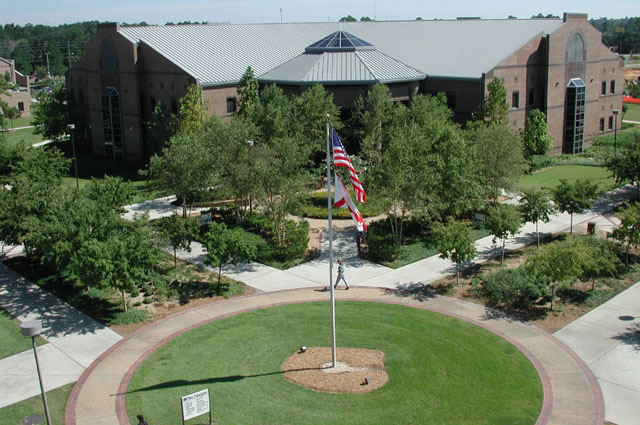5 Costly Financial Aid Mistakes Community College Students Make
Paying for Community College Series
By Kelsey Sheehy U.S.News: June 24, 2014 - see complete article
Loading up on classes to qualify for more student loans sets students up for failure, experts say..
Community college students who don't apply for scholarships and financial aid may be missing out on thousands of dollars in tuition assistance.
 Financial aid helps put college within reach for millions of students, but a few common mistakes and misconceptions can cost students thousands.
Financial aid helps put college within reach for millions of students, but a few common mistakes and misconceptions can cost students thousands.
Community college students, who are more likely to be first-generation students and less likely to have college counseling before enrolling, are more susceptible to these errors.
Experts at community colleges and college counseling centers say these five mistakes are ones students often make on the road to financial aid. (excerpts below: complete article here)
1. Procrastinating: The Free Application for Federal Student Aid, or FAFSA, is available Jan. 1, but students often don’t apply until the last minute, says Matt Falduto, director of one stop student services at Kirkwood Community College in Iowa. . . .
 2. Not applying for aid: "Many community college students, especially nontraditional students, don’t take the time to apply for financial aid," says David Metz, director of financial aid at Columbus State Community College in Ohio. . . .
2. Not applying for aid: "Many community college students, especially nontraditional students, don’t take the time to apply for financial aid," says David Metz, director of financial aid at Columbus State Community College in Ohio. . . .
3. Overlooking scholarships: Bypassing free money is rarely a wise move, yet many community college students do so on a regular basis, says Paula Dofat, director of college counseling at the Baltimore Leadership School for Young Women, an all-female charter school that focuses on math, science and technology.. . .
4. Borrowing too much: Community colleges are significantly less expensive than four-year universities, but students often borrow more than they have to. . . .
5. Taking more courses than they can handle: Community college students often need to be master jugglers, keeping balls for school, work and family in the air without crashing into one another. One of the quickest ways to drop one of those balls is overloading on courses simply to qualify for financial aid, Falduto says. . . .
 Students who overload on classes are more likely to drop a course down the road, which can affect their chances of getting financial aid in the future. They also won’t get credit for the course and will have to pay for it all over again when they retake the class.
Students who overload on classes are more likely to drop a course down the road, which can affect their chances of getting financial aid in the future. They also won’t get credit for the course and will have to pay for it all over again when they retake the class.
College students only need to be enrolled half-time to qualify for federal loans, and Pell Grants are adjusted based on the number of credit hours a low-income student is taking. That means students taking nine credit hours, which is considered 3/4 time at Kirkwood, would receive 75 percent of the Pell Grant amount they qualified for, Falduto says.
“You don’t have to be full time to get financial aid, but students often think that and take a full load when they don’t need to,” Falduto says. “They are making decisions in order to get money when it should be the other way around.”
Trying to fund your education at a two-year institution? Get tips, news and more in the U.S. News Paying for Community College center.
http://www.usnews.com/education/community-colleges/paying/articles/2014/06/24/5-costly-financial-aid-mistakes-community-college-students-make
By Kelsey Sheehy U.S.News: June 24, 2014 - see complete article
Loading up on classes to qualify for more student loans sets students up for failure, experts say..
Community college students who don't apply for scholarships and financial aid may be missing out on thousands of dollars in tuition assistance.
 Financial aid helps put college within reach for millions of students, but a few common mistakes and misconceptions can cost students thousands.
Financial aid helps put college within reach for millions of students, but a few common mistakes and misconceptions can cost students thousands.Community college students, who are more likely to be first-generation students and less likely to have college counseling before enrolling, are more susceptible to these errors.
Experts at community colleges and college counseling centers say these five mistakes are ones students often make on the road to financial aid. (excerpts below: complete article here)
1. Procrastinating: The Free Application for Federal Student Aid, or FAFSA, is available Jan. 1, but students often don’t apply until the last minute, says Matt Falduto, director of one stop student services at Kirkwood Community College in Iowa. . . .
 2. Not applying for aid: "Many community college students, especially nontraditional students, don’t take the time to apply for financial aid," says David Metz, director of financial aid at Columbus State Community College in Ohio. . . .
2. Not applying for aid: "Many community college students, especially nontraditional students, don’t take the time to apply for financial aid," says David Metz, director of financial aid at Columbus State Community College in Ohio. . . .3. Overlooking scholarships: Bypassing free money is rarely a wise move, yet many community college students do so on a regular basis, says Paula Dofat, director of college counseling at the Baltimore Leadership School for Young Women, an all-female charter school that focuses on math, science and technology.. . .
4. Borrowing too much: Community colleges are significantly less expensive than four-year universities, but students often borrow more than they have to. . . .
5. Taking more courses than they can handle: Community college students often need to be master jugglers, keeping balls for school, work and family in the air without crashing into one another. One of the quickest ways to drop one of those balls is overloading on courses simply to qualify for financial aid, Falduto says. . . .
 Students who overload on classes are more likely to drop a course down the road, which can affect their chances of getting financial aid in the future. They also won’t get credit for the course and will have to pay for it all over again when they retake the class.
Students who overload on classes are more likely to drop a course down the road, which can affect their chances of getting financial aid in the future. They also won’t get credit for the course and will have to pay for it all over again when they retake the class.College students only need to be enrolled half-time to qualify for federal loans, and Pell Grants are adjusted based on the number of credit hours a low-income student is taking. That means students taking nine credit hours, which is considered 3/4 time at Kirkwood, would receive 75 percent of the Pell Grant amount they qualified for, Falduto says.
“You don’t have to be full time to get financial aid, but students often think that and take a full load when they don’t need to,” Falduto says. “They are making decisions in order to get money when it should be the other way around.”
Trying to fund your education at a two-year institution? Get tips, news and more in the U.S. News Paying for Community College center.
http://www.usnews.com/education/community-colleges/paying/articles/2014/06/24/5-costly-financial-aid-mistakes-community-college-students-make





0 Comments:
Post a Comment
<< Home